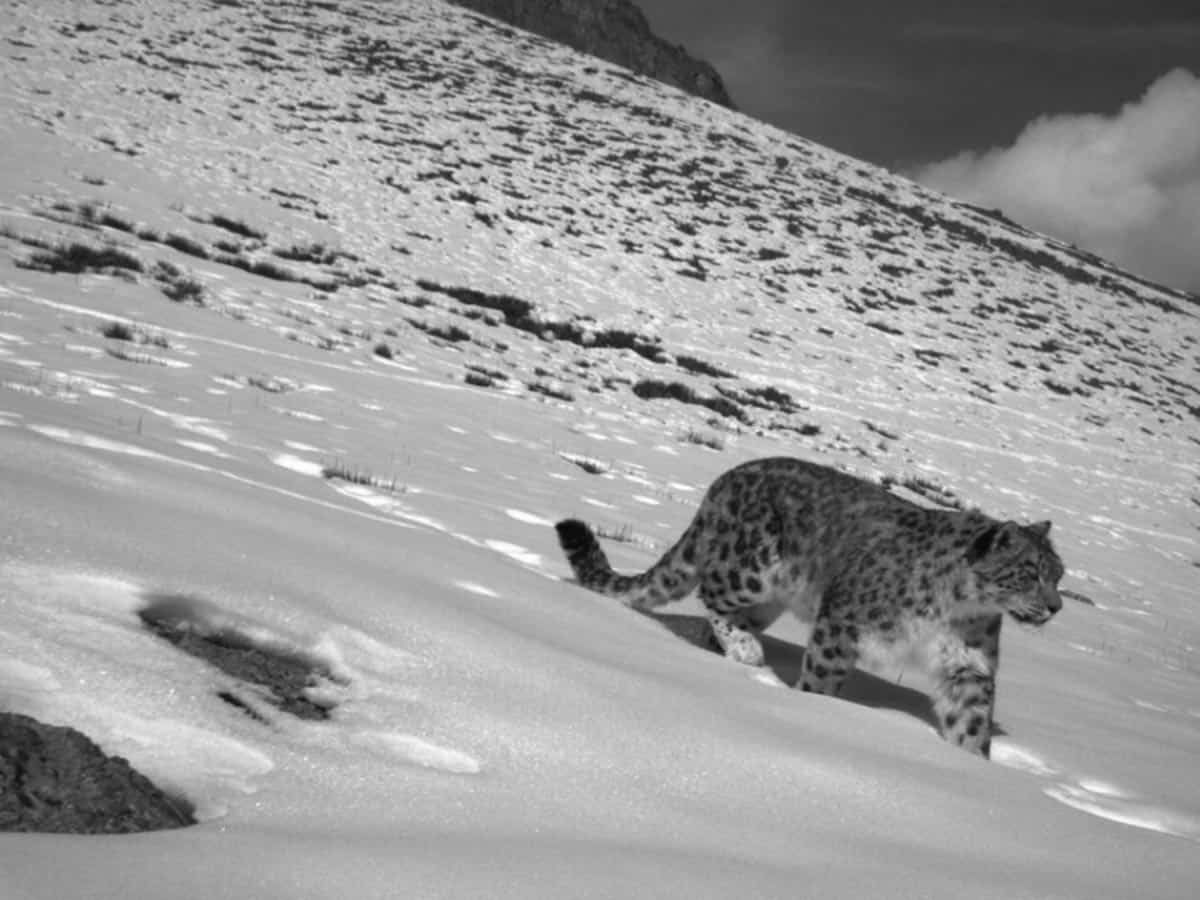New Delhi: All the research efforts, spanning over a century, have only managed to cover 23 per cent of snow leopard habitat and the rest remains unexplored, according to a WWF report.
Most of the vast range — possibly over 1.7 million sqkm of rugged mountain terrain — has never been researched from a snow leopard context, said the report titled “Over 100 Years of Snow Leopard Research – A spatially explicit review of the state of knowledge in the snow leopard range” which examines the current state of knowledge across their habitat.
The report is based on an analysis of peer reviewed published papers on the species and its habitat. It points at some glaring gaps in our knowledge of this elusive and threatened big cat species and highlights that lack of basic data could be hampering its conservation.
Globally, there could be as few as 4,000 snow leopards left in Asia’s high mountains and this remaining population faces continued and emerging threats.
Increased habitat loss and degradation, poaching and conflict with communities have contributed to a decline in their numbers and left the species hanging by a thread in many places, the WWF report mentions.
The report also highlights that although conservationists are addressing several of the threats, a robust analysis of how effective the interventions are in achieving their objectives remains deficient.
“Snow leopards are not just the emblems of Asia’s high mountains but are also critical to sustaining the landscapes they live in, which support water sources for over 2 billion people,” said Margaret Kinnaird, Lead Wildlife Practice, WWF International.
“The report will be a guide for the conservation community to diversify and prioritize areas of conservation research to preserve sufficient and suitable habitat for snow leopards and to ensure water security for the vast human populations downstream.”
The WWF report points out that despite a major research focus on snow leopard population assessments, less than 3 per cent of the big cat’s range has robust data on abundance.
Though snow leopard research in the past few decades has been growing exponentially, there are only four research hotspots where multi-year research is being carried out.
A large majority of snow leopard habitat, spanning over 12 countries, remains under-researched, and critical knowledge gaps must be plugged for informed conservation, according to a WWF report.
“The snow leopard lives in rugged terrain — some of the harshest landscapes on the planet — so research poses significant logistical challenges.
“Serious efforts to learn more about the species began in the 1970s but the snow leopard’s remote and vast range and elusive nature, means that most of the habitat is still unexplored and we don’t have a full picture of the status of this magnificent wild cat,” said Rishi Kumar Sharma, WWF Global Snow Leopard Lead, who is the lead author of the report.
As part of its conservation strategy, WWF supports vital research, including the use of camera traps and satellite collaring, to collect more data on the elusive big cat.
In recent years, there has been a growing global focus on national-level population assessments and several countries, and NGOs, have come up with nationwide snow leopard numbers.
“We need to build a more accurate picture of the status of snow leopard populations and establish baselines and indicators for both snow leopards and their prey species so that range states can better assess future changes and evaluate the impact of conservation actions. But more than anything else, we need a much better understanding of what the people sharing space with snow leopards think,” said Sharma.
According to the WWF, The snow leopard’s powerful build allows it to scale great steep slopes with ease. Its hind legs give it the ability to leap six times the length of its body. A long tail provides balance and agility and also wraps around the resting snow leopard as protection from the cold.
The mountains ranges rich with their prey such as blue sheep, Argali wild sheep, ibex, marmots, pikas and hares found in 12 countries — including China, Bhutan, Nepal, India, Pakistan, Afghanistan, Russia, and Mongolia — are their habitat.

